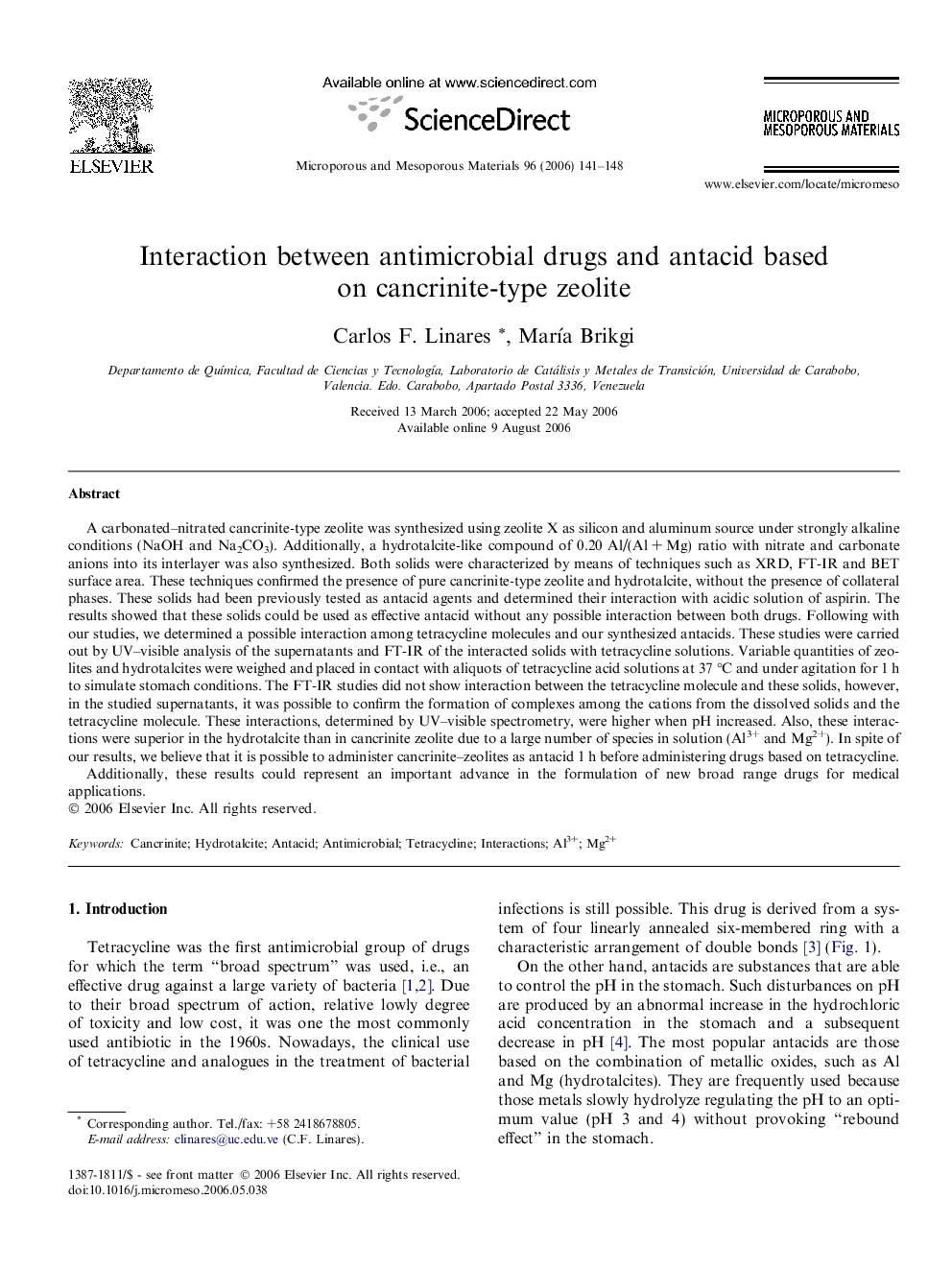| Article ID | Journal | Published Year | Pages | File Type |
|---|---|---|---|---|
| 76911 | Microporous and Mesoporous Materials | 2006 | 8 Pages |
A carbonated–nitrated cancrinite-type zeolite was synthesized using zeolite X as silicon and aluminum source under strongly alkaline conditions (NaOH and Na2CO3). Additionally, a hydrotalcite-like compound of 0.20 Al/(Al + Mg) ratio with nitrate and carbonate anions into its interlayer was also synthesized. Both solids were characterized by means of techniques such as XRD, FT-IR and BET surface area. These techniques confirmed the presence of pure cancrinite-type zeolite and hydrotalcite, without the presence of collateral phases. These solids had been previously tested as antacid agents and determined their interaction with acidic solution of aspirin. The results showed that these solids could be used as effective antacid without any possible interaction between both drugs. Following with our studies, we determined a possible interaction among tetracycline molecules and our synthesized antacids. These studies were carried out by UV–visible analysis of the supernatants and FT-IR of the interacted solids with tetracycline solutions. Variable quantities of zeolites and hydrotalcites were weighed and placed in contact with aliquots of tetracycline acid solutions at 37 °C and under agitation for 1 h to simulate stomach conditions. The FT-IR studies did not show interaction between the tetracycline molecule and these solids, however, in the studied supernatants, it was possible to confirm the formation of complexes among the cations from the dissolved solids and the tetracycline molecule. These interactions, determined by UV–visible spectrometry, were higher when pH increased. Also, these interactions were superior in the hydrotalcite than in cancrinite zeolite due to a large number of species in solution (Al3+ and Mg2+). In spite of our results, we believe that it is possible to administer cancrinite–zeolites as antacid 1 h before administering drugs based on tetracycline.Additionally, these results could represent an important advance in the formulation of new broad range drugs for medical applications.
